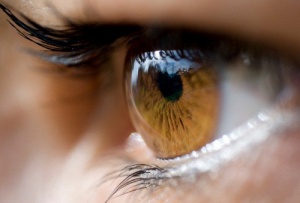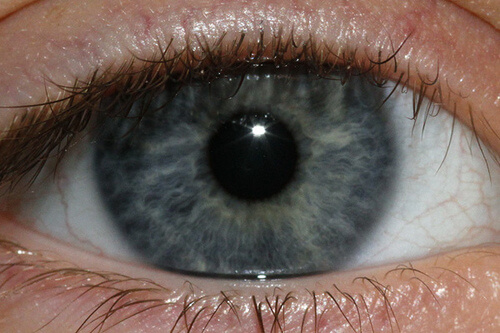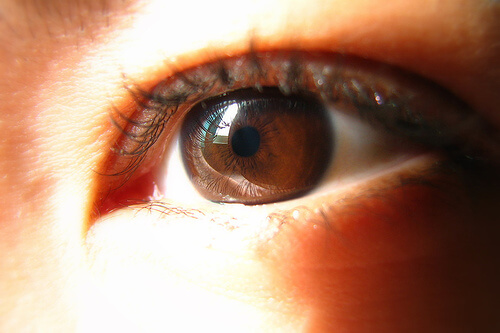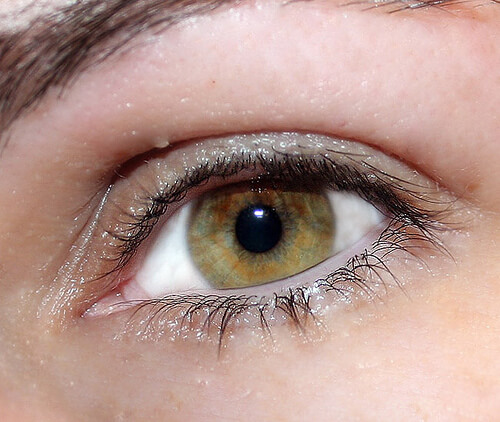What Can the Color of Your Eyes Tell You?

Iridology is an branch of alternative medicine that studies the eye’s iris. According to proponents, this part of the body which can be used to determine one’s predisposition to suffering certain health problems. Adherents say the color of your eyes, in particular, can give you this information.
Iridologists are people who perform extensive exams on all the signals an eye can give. According to them, the color of your eyes can confirm certain suspicions about your health. It might even be able to warn about conditions you weren’t aware of, they say.
According to iridology, the color of the iris determines a person’s general state of health. However, they also admit that the eventual direction of your health depends on how you take care of yourself, how you eat, and other factors. This means that, even according to proponents, the iris can’t determine how your health will end up after the years. They say the color of your eyes is simply a clue for help guide you to better health.
See Also: The Health Benefits of Plants in Your Home
In this article, we’re going to explain the generic characteristics of each eye color according to iridology. Under this philosophy, eye colors are divided into three categories:
Blue and Gray eyes
Individuals with a blue or grey iris could have weak points in their throat, nose, and ears. According to iridologists, this could predispose them to cataracts, respiratory problems, irritation in the digestive mucous, and kidney or joint problems.
Also Read: Sore Throat Remedies
When the iris has several white lines in it, this is also a sign of some sort of alteration in the nervous system, thereby leading to a nervous or anxious disposition, muscle spasms and a blending of these mood states with physical problems. In this case, iridologists recommend you help yourself with relaxing medicinal plants, Bach Flowers, or homeopathy.

Brown and dark eyes
This tone encompasses anything from light brown or hazel, to dark brown or nearly black.
Generally speaking, these iris’s show a predisposition to suffering from imbalances related to the blood or mineral metabolism, like calcium, iron, and sulfur, which means that these individuals should care for their circulatory system, especially the liver, bone marrow and the spleen.
Over the course of time, these people could also tend to be obese, have thyroid problems, and endocrine alterations, which means that treatment and prevention will also need to include liver health.
These individuals might generally avoid health problems when younger, but after 25 or 30 years of age, they may begin to detect problems in their blood: high cholesterol, anemia, etc.
This eye color means that care needs to be taken from a young age.
We also recommend that these individuals exercise regularly to maintain balance in the circulatory system. They should also take specific supplements.
Lighter eyes, on the other hand, like hazel eyes, will lead to a predisposition to digestive and respiratory problems. The body will need help eliminating toxins with regular cleanses and a healthy diet.

Green and mixed eyes
This category encompasses all colors that range somewhere between the categories previously mentioned, and include irises that mix colors. These are generally green and brown. This category also include purely green eyes. In order to determine your disposition, you must check to see whether your eyes are lighter or darker, which means that you will primarily fall into either the first or the second category.

Proof that the color of your eyes determines your health
A good way to check just how trustworthy this diagnosis is is to compare yourself with direct family members that have the same eye color as you do. Although, as said at the beginning of the article, whether you develop certain diseases or not is dependent on how you care for your health.
Note that there is no scientific evidence to support iridology. Neither is there any evidence to support the idea that the color of your eyes has any bearing on your health.
Photos courtesy of neuroticcamel, Jenn Durfey and starbooze.
All cited sources were thoroughly reviewed by our team to ensure their quality, reliability, currency, and validity. The bibliography of this article was considered reliable and of academic or scientific accuracy.
- Ernst, E. (2000). Iridology: not useful and potentially harmful. Archives of Ophthalmology, 118(1), 120-121. Available at: https://jamanetwork.com/journals/jamaophthalmology/fullarticle/412789. Accessed 02/03/2020.
- Knipschild, P. (1988). Looking for gall bladder disease in the patient’s iris. BMJ, 297(6663), 1578-1581. Available at: https://doi.org/10.1136/bmj.297.6663.1578. Accessed 02/03/2020.
- Ministerio de Sanidad, Consumo y Bienestar Social (2019). El Gobierno lanza la campaña #CoNprueba frente a las pseudoterapias y las pseudociencias. Available at: https://www.mscbs.gob.es/gabinete/notasPrensa.do?id=4527. Accessed 02/03/2020.
- Norn, M. (2003). Analysis of iris: history and future. Dansk medicinhistorisk arbog, 103-117. Available at: https://europepmc.org/article/med/14765528. Accessed 02/03/2020.
- Salles, L. F., & da Silva, M. J. P. (2008). Iridologia: revisão sistemática. Rev Esc Enferm USP, 42(3), 585-9. Available at: https://doi.org/10.1590/S0080-62342008000300026. Accessed 02/03/2020.
- Simon, A., Worthen, D. M., & Mitas, J. A. (1979). An evaluation of iridology. Jama, 242(13), 1385-1389. Available at: https://jamanetwork.com/journals/jama/article-abstract/366685. Accessed 02/03/2020.
This text is provided for informational purposes only and does not replace consultation with a professional. If in doubt, consult your specialist.








